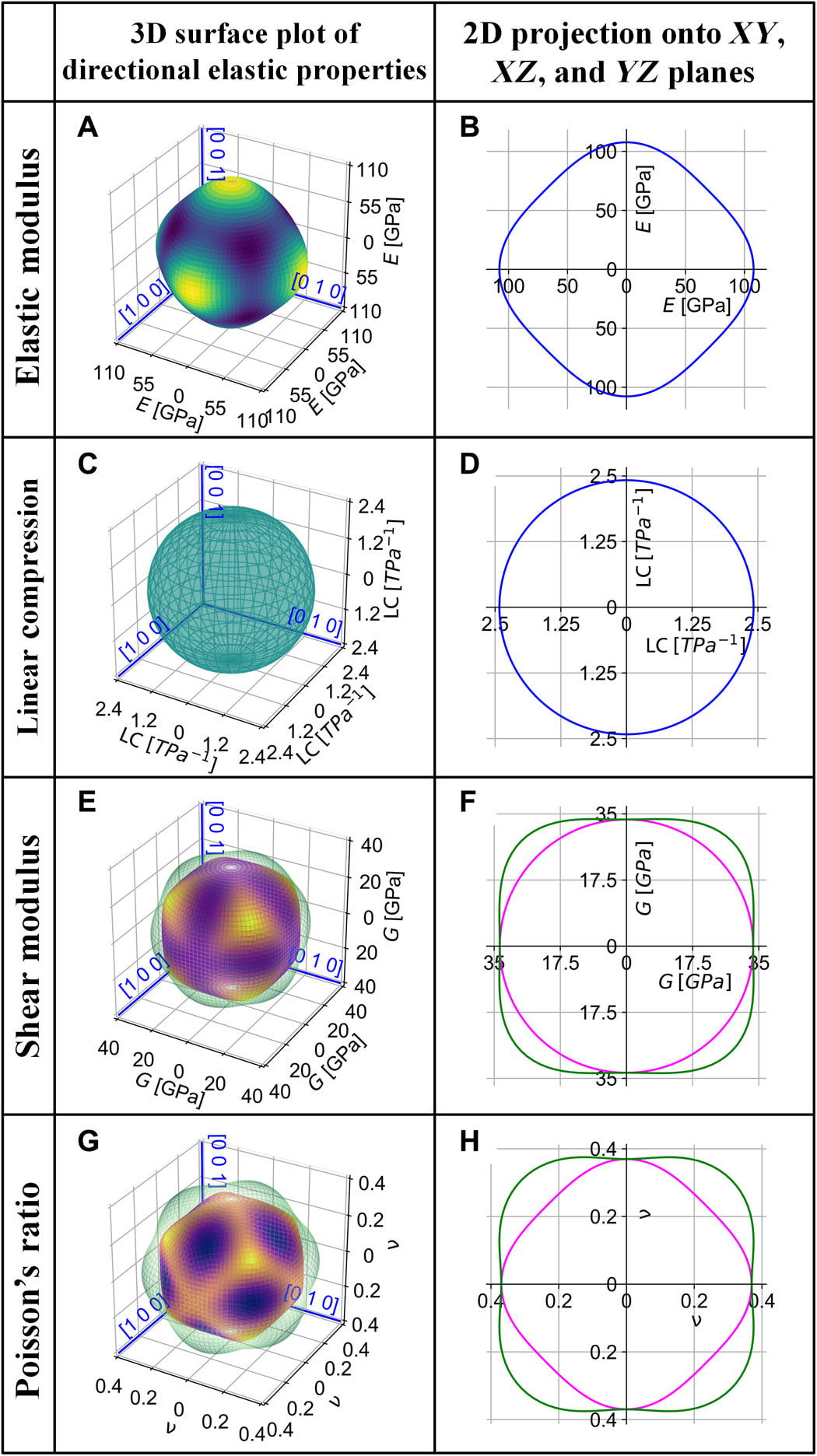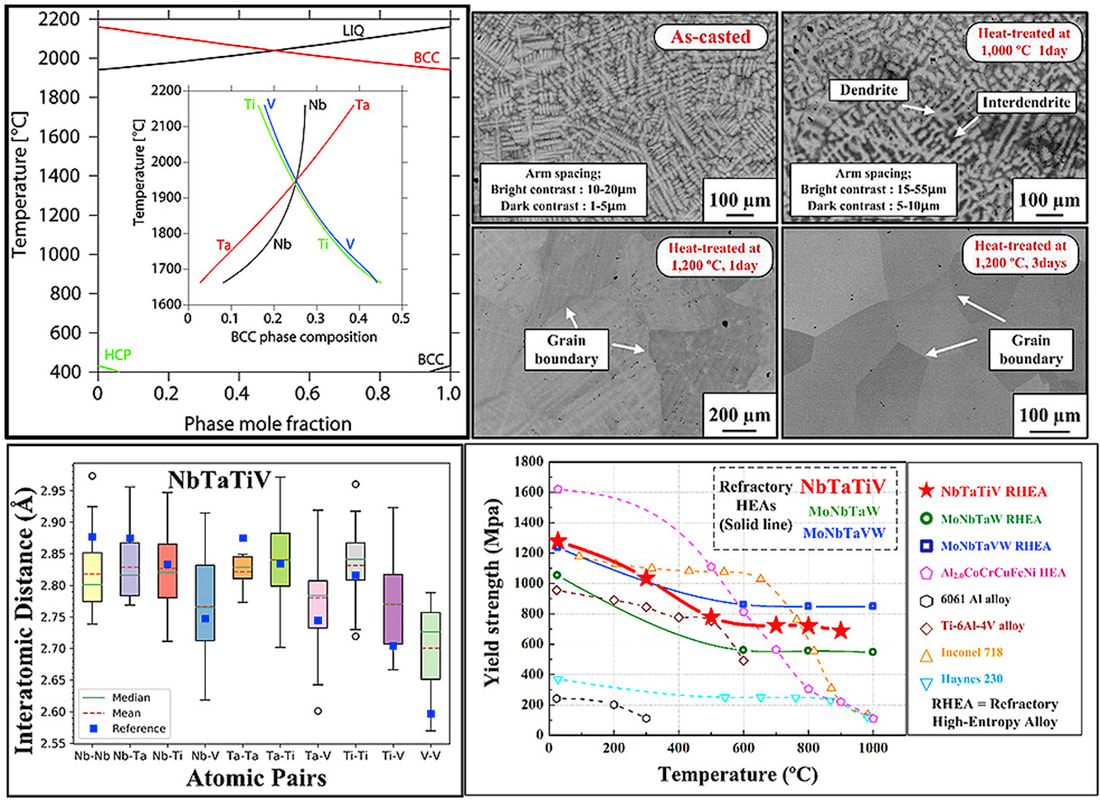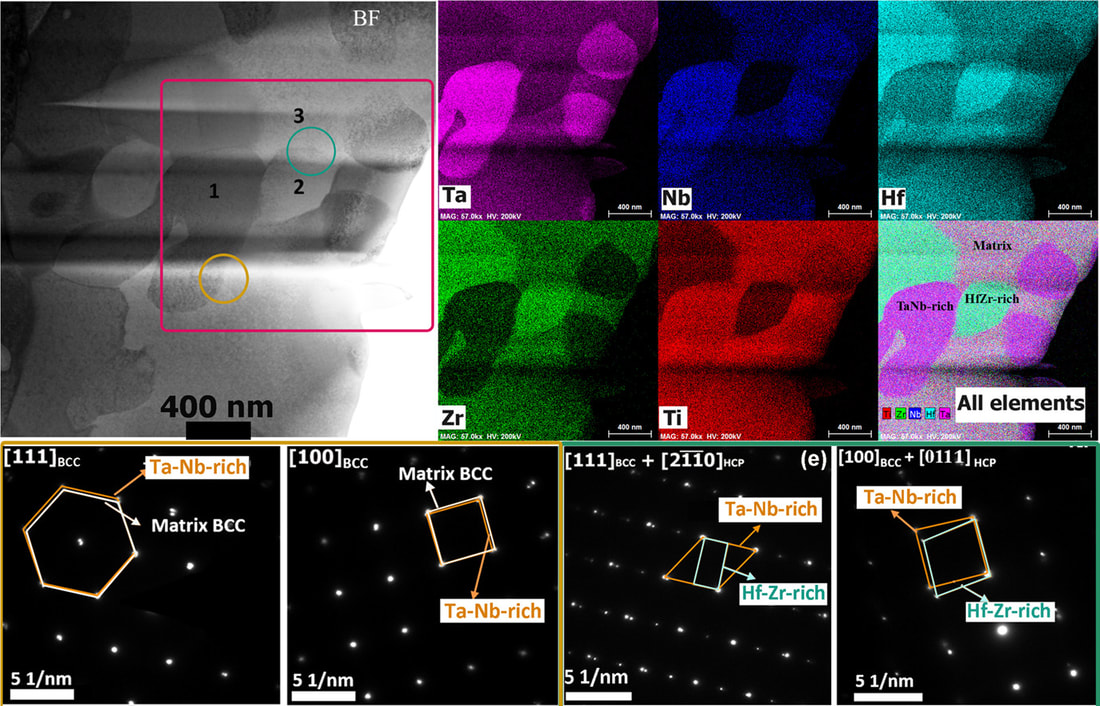We design materials with theories, computations and data.
|
We recently discovered some surprising properties in the NbTaTiV high-entropy alloys. For example, the alloy shows good elastic isotropy at room temperature, but with the increase of temperature, its elastic anisotropy actually increases. Such temperature dependence of elastic anisotropy is not induced by phase transformations, but is an intrinsic feature of the BCC high entropy alloy. Our first-principles and machine learning predictions are in good agreement with experimental observations. These results are reported in an article on Science Advances.
The study was in collaboration with Prof. Peter Liaw's group at University of Tennessee and Prof. Yi-Chia Chou's group at National Chiao Tung University in Taiwan.
0 Comments
In collaboration with Prof. Peter Liaw's group at University of Tennessee, we recently designed a new single-phase BCC refractory high-entropy alloy (HEA) NbTaTiV. The novel HEA exhibits high yield strength and ductility at both room and high temperatures. First-principles approaches based on density functional theory (DFT) provided critical information on the thermodynamic stability and lattice distortions in the alloy design. Integrated with the CALPHAD method and in situ structural characterizations, a heat-treatment process was developed that eliminates structural and chemical inhomogeneity. "Lattice distortion in a strong and ductile refractory high-entropy alloy", Acta Materialia, 160, 158-172 (2018) [PDF] Refractory high-entropy alloys (RHEA) are promising structural materials for high-temperature thermal-harsh environment. The HfNbTaTiZr RHEA is a good example that shows a rare combination of high strength and good ductility. In real-world applications, high-temperature alloys have to maintain a high phase stability not only at high temperatures, but also for a wide range of temperatures for a prolonged service time. While the HfNbTaTiZr RHEA is generally regarded as a single-phase BCC solid solution, recent studies by Senkov et al suggest phase decomposition after cold-rolling at 800 °C. Controversy still exists for the phase stability of the HfNbTaTiZr RHEA at intermediate temperatures. In the present work, we investigated the phase decomposition of the RHEA at different temperatures (500–1000 °C). The formation of BCC Ta-Nb-rich and HCP HfZr-rich precipitates, as well as their preferred orientation to the BCC matrix, are elucidated from experiments. Thermodynamic modeling shows good agreement with experiments.
"Phase transformations of HfNbTaTiZr high-entropy alloy at intermediate temperatures", Scripta Materialia, 158, 50-56 (2019) [PDF] |
Categories
All
Archives
September 2020
|




 RSS Feed
RSS Feed
